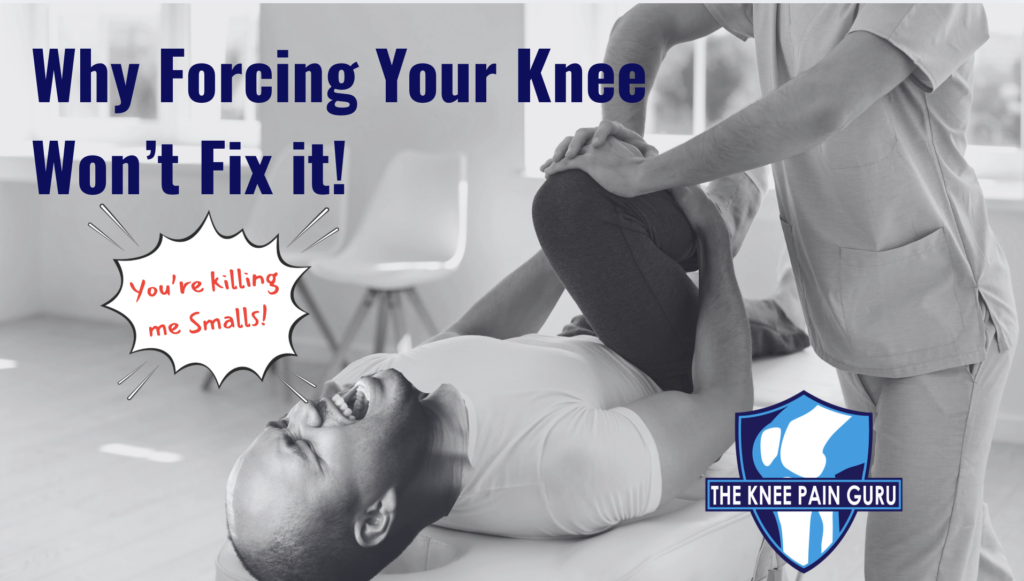Achieving Full Range of Motion in the Knee Joint: Why It Takes More Than Force
Full knee motion is often treated as a local joint issue by the conventional medical model. If you’ve had surgery, an injury, or joint stiffness, you’ve likely been told to push through the pain, strengthen the leg muscles, or even submit to manipulation under anesthesia.
But that method is outdated—and often harmful. It’s based on a mechanical view of the body that ignores the deeper intelligence of your nervous system.

The Pitfalls of the Conventional Approach to Knee Mobility
Mainstream rehab usually relies on:
- Forcing knee movement through painful range of motion stretches.
- Strengthening the leg, which often increases tension.
- Manipulation under anesthesia to “break through” scar tissue.
While these tactics aim for quick gains in full knee motion, they ignore the body’s natural protective response. Pain is a sign your system is guarding—and pushing through it creates more trauma, not healing.
Learn more about outdated recovery methods from this orthopedic medicine overview.
Why a Parasympathetic State Unlocks Real Healing
Here’s the truth: your body isn’t fighting you—it’s protecting you.
To restore knee mobility, we need to work with the nervous system, not against it. That means shifting from a sympathetic “fight-or-flight” state into a parasympathetic “rest-and-digest” mode. This is where muscles soften, joints unlock, and healing begins.
Through gentle breathwork, specific movement, and positional release techniques, the knee stops guarding—and full range of motion naturally returns without force or pain.
Learn how parasympathetic techniques can support healing: Cleveland Clinic on Parasympathetic Response
Looking Beyond the Knee: It’s a Whole-Body Issue
Instead of treating the knee like an isolated hinge, we need to look at the kinetic chain. Limited full knee motion may actually stem from:
- A misaligned pelvis or rotated hip.
- A stiff ankle that shifts movement into the knee.
- Emotional tension stored in the heart or spine.
This is where a holistic approach shines. By treating the knee in context with the rest of the body, we go from playing checkers to playing chess—intelligently restoring balance and function.
Holistic Solutions for Full Knee Motion
Achieving long-lasting, pain-free range of motion involves:
- Parasympathetic nervous system activation
- Stepping reflex integration
- Osteopathic techniques that work with natural reflexes
- Homeopathic support for inflammation and healing
- Addressing emotional patterns stored in the tissue
These techniques are part of the integrative system I use every day with clients online and in person.
Get the Full Picture—Without the Pain
Tired of being told to push harder? You don’t need more pain—you need a better plan.
👉 Book a complimentary 15-minute consult and let’s talk about how to gently unlock your full knee motion by treating the real issue—your nervous system.
Schedule a Consultation
Holistic Solutions for Full Knee Motion
Achieving long-lasting, pain-free knee range of motion involves:
- Parasympathetic nervous system activation
- Stepping reflex integration
- Osteopathic techniques that work with natural reflexes
- Homeopathic support for inflammation and healing
- Addressing emotional patterns stored in the tissue
These techniques are part of the integrative system I use every day with clients online and in person.
Want to dive deeper into how your nervous system directly impacts your knee pain?
👉 Read: Does Creating a Parasympathetic State Help With Knee Pain Relief?
This article breaks down why relaxation, not forcing the knee joint, is the key to recovery.
